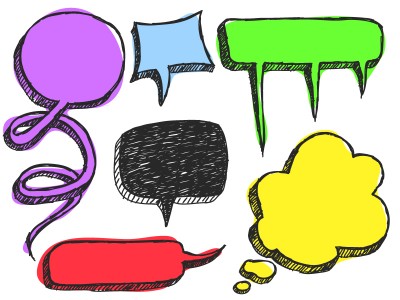Depending on the type of story you are writing, your dialogues will be subject to different standards. Getting acquainted with them will save you many headaches.

1. The Film and TV Script
TThis is one of the most rigid formats as it is a technical document used by film crews in order to develop the final product. The dialogue will be center-aligned. The speaking character’s name will be capitalized, the stage directions (if any) will appear just below the name, and the lines of dialogue will be at the bottom. Here’s an example:

2. The Stage Play
This type of dialogue format shares some features with the film script. The speaking characters’ names are capitalized but left-aligned instead of center-aligned, and the stage directions are in brackets and italics. Here is an example:
JACK. (Happy) I love this game, dad. We should play more often.
JAMES. (He picks up the ball) Sure!
3. Traditional Format
In the case of novels and short stories, when a character is speaking, his/her exact words must be in quotations so the readers know someone is speaking. You must also follow these additional rules:
A. Each speaker has his or her own paragraph including a return and indent. This mimics real conversation, indicating pauses, and so forth.
B. Attributions (“He said,” “She said,” and variations) should be used, but not too much. They should be varied in order to not be repetitious. They can be used at the beginning of quotes, in the middle, or at the end. When attributions are overused, they get in the way. The key is the reader should always know who is speaking.
C. Always use a comma with attributions (she said,) when introducing a quote.
Example of traditional dialogue:
“I love this game, Dad,” Jack said. “We should play more often.”
“Sure.”
4. Indirect Dialogue
In this less common format, the narrator speaks for the characters. This can be confusing if the dialogues are abundant and long, and the writer risks writing the word “that” all the time:
“Jack says that he loves the game and that they should play more often. His father smiles at him and answers that of course they will.”
Related posts
Reasons for Using Dialogue in a Story
How to Use Dialogue Tags Properly
How to Choose the Setting of Your Story
 This site uses cookies. By continuing to browse the site, you are agreeing to
This site uses cookies. By continuing to browse the site, you are agreeing to 



I have written a really cool story about my first elk hunting trip to Colorado. It was my first draft. I got the rubric back and had done super EXCEPT I didn’t add any dialogue. I just can’t figure out ho.. to add dialogue to my story. Can someone help me understand how to go back and speak my story? I just turned 14.
Don’t worry. A story without dialogue can be good too. It’s not an imprescindible resource.
But, if you want to add it anyway, you should read the story from the beginning looking for those places where dialogue can help and then re-writing them.
Two very interesting books you may read:
http://www.amazon.com/How-Write-Dazzling-Dialogue-Manuscript/dp/0910355142/
http://www.amazon.com/Revision-Self-Editing-Publication-Transforming/dp/1599637065/
Hope this help!
Iria
I have just found this site. It seems wonderful. I like the way you explain Dialogue. I am an ametuer writer asn need all the help, and tips I can get.
Thank you.
Thanks, Vincent! I’m glad you like it. 🙂
Happy Writing!!